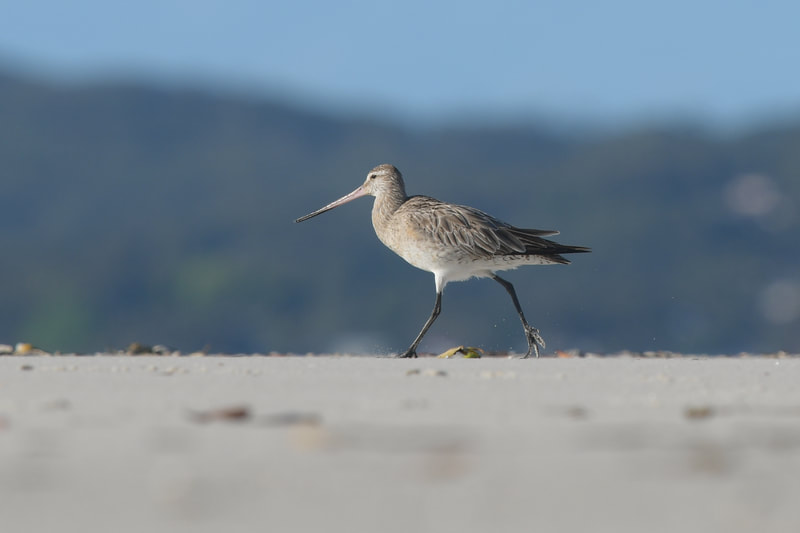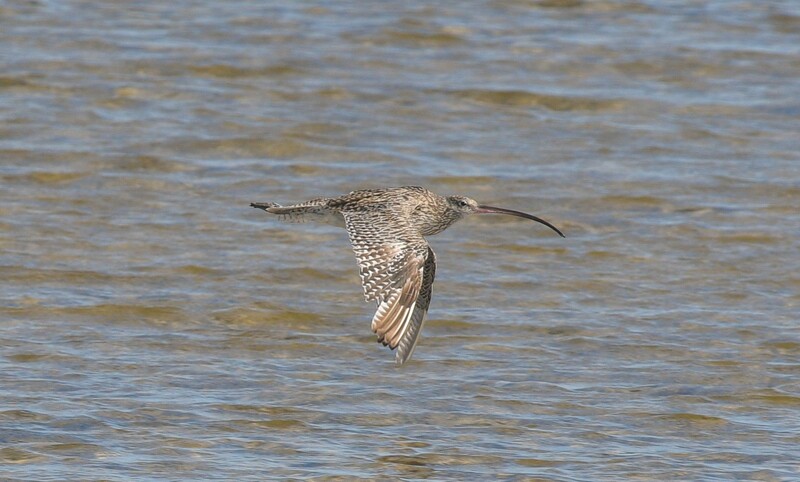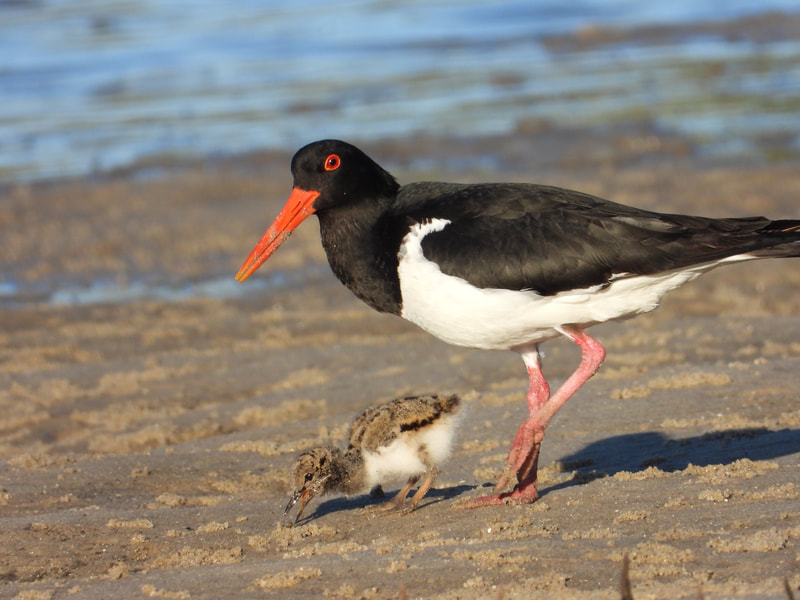SHARING THE SHORE –
October 21 Nota Article Trish Blair
It’s that exciting time of the year again when migratory and resident shorebird species start arriving into the Port Stephens area, as well as other favoured spots up and down the Eastern Australian Coast, to breed or rest and feed during their non-breeding season.
Already there are significant numbers of Eastern Curlew and Bar-tailed Godwit along our beaches. They have flown thousands of kilometres from the Northern Hemisphere to enjoy our summer weather and abundant food resources along our shores and waterways. Photos of E Curlew and Bar-tailed Godwit by Sharon Taylor
The Pied Oystercatcher returns in pairs to lay their eggs in roughly the same place each year. The sand spoil at the Short Cut or East Channel of the Myall River is one place, and there are a few places on Corrie Island where pairs are currently getting ready to reproduce. The sand spoil pair have already produced the chick in the attached photo kindly supplied by Annabelle Burley
The Little Tern will be looking to breed by early November around Winda Woppa and on Corrie Island by laying their eggs in shallow scrapes on the beach above the high tide line, similar to the Pied Oystercatchers. They have already been spotted in large numbers in the Harrington area, and we anticipate they will also choose this area
The NSW Dept of Planning Industry, NSW National Parks and Wildlife Service, The NSW Government’s Saving our Species Program, Hunter Local Land Services, Crown Lands and Mid Coast Council work diligently all year to identify and manage threats and predators, where possible, install appropriate signage and fencing, undertake education and awareness programs and work in hand with local volunteers to monitor the numbers and breeding success of Little Tern, Pied Oystercatchers and Beach Stone- curlew.
All the species mentioned above are classified as Vulnerable, Endangered or Critically Endangered as suitable locations and conditions diminish with the growing impact of Human activities.
So as Summer draws near we ask you to be aware of these special visitors, enjoy their presence from a discreet distance and give them the space and peace to successfully breed or rest and recuperate, both activities vital to their ongoing survival.
Please heed the signs, walk your pets below the high tide mark on designated dog beaches only and be aware when walking above that mark as the ‘nests’ eggs and chicks are very fragile and well camouflaged by the surrounding sand.
Everyone can enjoy our beautiful environment with just a little care and awareness.
Learn more at www.environment.nsw.gov.au/news/beach-nesting-birds-share-the-shore




